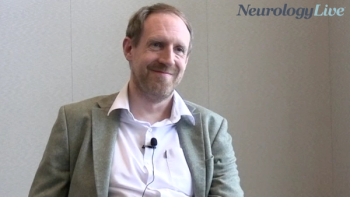
Dreem Headband EEG Device Accurately Monitors Sleep, Processes Sleep Stages
The affordable device’s accuracy compared to polysomnography may pave the way for a better way to conduct larger scale, longitudinal sleep studies.
Pierrick J. Arnal, PhD
The findings of a joint clinical study (NCT03725943) suggest that the Dreem headband (DH), a reduced-montage dry-electroencephalographic (EEG) device developed by Dreem, can monitor sleep-related physiological signals and process them into sleep stages accurately, which may help pave the way for larger scale, longitudinal sleep studies.1
All told, compared to the gold standard of polysomnography (PSG), the DH reported a mean percentage error in EEG signals for the monitoring of alpha (α), beta (β), delta (λ), and theta (θ) frequencies during sleep was 15% (±3.5), 16% (±4.3), 16% (±6.1), and 10% (± 1.4), respectively. Similarly, the mean absolute error for heart rate was 1.2 bpm (±0.5), for breathing frequency was 0.3 cpm (±0.2), and for respiration rate variability (RRV) was 3.2% (±0.6).
Automatic sleep staging reached an overall accuracy of 83.5% (±6.4; F1 score: 83.8 [±6.3]) for the DH, in comparison with an average of 86.4% (±8.0; F1 score: 86.3 [±7.4]) for the 5 sleep experts scoring on the PSG. The sleep stages assessed were N1, N2, N3, REM, and Wake.
Study author Pierrick J. Arnal, PhD, vice president, science and medical, Dreem, and colleagues, noted that the ambulatory wireless dry-EEG enabled the acquiring of signals, reliable measurements of heart rate and breathing, and perform sleep staging classification according to the criteria of the American Academy of Sleep Medicine (AASM). Coupled with the price and ease of use of the device, Arnal et al. wrote that the DH can enable “groundbreaking advancements” in the realm of sleep medicine and research, which could help identify currently unknown patient subgroups, early disease biomarkers, push toward personalized therapies, and monitor neurological health and treatment response.
READ MORE:
“Dreem is at the forefront of a new revolution. This is the beginning of true, comfortable EEG sleep recordings at home,” Emmanuel Mignot, MD, PhD, member, US National Academy of Sciences, and director, Stanford Center for Sleep Sciences and Medicine, Stanford University, in a statement.2 “Soon, the transition to sleep recording at home and machine learning-based interpretation of sleep studies will be fulfilled. This will enhance doctors' ability to diagnose and take care of patients remotely.”
In total, the study included 25 subject who completed an overnight sleep study at a sleep center while wearing both the DH and a PSG simultaneously. The device utilizes a deep learning algorithm along with 5 dry-EEG electrodes (O1, O2, FpZ, F7, and F8), a 3-D accelerometer, and a pulse oximeter embedded in the device. The PSG assessment was conducted with a Siesta 802 (Compumedics Limited) with the following EEG derivations: F3/M2, F4/M1, C3/M2, C4/M1, O1/M2, O2/M1.
The quality of the EEG signal assessed through the mean percentage error of the relative spectral power for the PSG F3-O1/PSG F4-O2 for α, β, λ, and θ frequencies was found to be 7.7% [±2.4], 8.6% [±3.7], 7.2% [±2.7], and 7.4% [±2.1], respectively.
The PSG measured value for heart rate was 61.3 (±6.8), compared to 60.6 (±6.5) with the DH. Likewise, the breathing values for PSG and DH were 14.9 (±1.9) and 14.8 (±1.8), and RRV values were 53.5 (±2.2) and 52.2 (±2.8), respectively.
“This study paves the way for longitudinal sleep studies that directly monitor brain activity instead of relying merely on wrist motion,” said Raphael Heinzer, MD, MPH, director, Sleep Center, University of Lausanne, in a statement.2
REFERENCES
1. Arnal PJ, Thorey V, Debellemaniere E, et al. The Dreem Headband compared to polysomnography for electroencephalographic signal acquisition and sleep staging. Sleep. zsaa097. doi: 10.1093/sleep/zsaa097.
2. Peer-Reviewed Study Shows Dreem Headband Combined with AI Is as Accurate as Sleep Center Experts [press release]. New York, NY. Dreem. Published June 25, 2020. Accessed July 20, 2020. newswise.com/articles/peer-reviewed-study-shows-dreem-headband-combined-with-ai-is-as-accurate-as-sleep-center-experts.
Newsletter
Keep your finger on the pulse of neurology—subscribe to NeurologyLive for expert interviews, new data, and breakthrough treatment updates.































